- Article
- Open Access
- Published:
A blog that publishes updates and open access scientific papers about allergy, asthma and immunology. Editor: Juan Carlos Ivancevich, MD. Specialist in Allergy & Immunology
September 26, 2022
Validation of an overnight wireless high-resolution oximeter for the diagnosis of obstructive sleep apnea at home
Effectiveness and safety of lanadelumab in ethnic and racial minority subgroups of patients with hereditary angioedema: results from phase 3 studies
- Short report
- Open Access
- Timothy J. Craig,
- Rafael H. Zaragoza-Urdaz,
- H. Henry Li,
- Ming Yu,
- Hong Ren,
- Salomé Juethner,
- John Anderson on behalf of
- the HELP and HELP OLE Study Investigators
Allergy, Asthma & Clinical Immunology volume 18, Article number: 85 (2022)
Abstract
Background
The COVID-19 pandemic has highlighted disparities in healthcare, particularly in the United States, even though disparities have existed since the organization of the modern healthcare system. Recruitment of patients from racial and ethnic minority groups is often minimal in phase 3 clinical trials, and is further exacerbated in the case of trials for rare diseases such as hereditary angioedema (HAE).
September 25, 2022
Chronic air pollution-induced subclinical airway inflammation and polygenic susceptibility
- Research
- Open Access
Abstract
Background
Air pollutants can activate low-grade subclinical inflammation which further impairs respiratory health. We aimed to investigate the role of polygenic susceptibility to chronic air pollution-induced subclinical airway inflammation.
Methods
We used data from 296 women (69–79 years) enrolled in the population-based SALIA cohort (Study on the influence of Air pollution on Lung function, Inflammation and Aging). Biomarkers of airway inflammation were measured in induced-sputum samples at follow-up investigation in 2007–2010. Chronic air pollution exposures at residential addresses within 15 years prior to the biomarker assessments were used to estimate main environmental effects on subclinical airway inflammation.
September 23, 2022
Guidance for Administering Biologics for Severe Asthma and Allergic Conditions

doi: 10.1155/2022/9355606
Delbert R. Dorscheid,
 1 Jason K. Lee, 2 Warren Ramesh, 3 Mark Greenwald, 4 and Jaime Del Carpio 5
1 Jason K. Lee, 2 Warren Ramesh, 3 Mark Greenwald, 4 and Jaime Del Carpio 5Induction of natural IgE by glucocorticoids
September 21, 2022
Metabolomic changes related to airway inflammation, asthma pathogenesis and systemic activity following inhaled fluticasone furoate/vilanterol: a randomized controlled trial
- Research
- Open Access
Respiratory Research volume 23, Article number: 258 (2022)
Abstract
Background
Fluticasone furoate/vilanterol trifenatate (FF/VI) is an inhaled therapy for the treatment of asthma, with a prolonged duration of anti-inflammatory and bronchodilatory action. This study investigated the global metabolomic and lipidomic profile following treatment with FF/VI or placebo and assessed whether changes correlated with exhaled nitric oxide levels as a measure of airway inflammation.
September 20, 2022
Recent advances in vitamin D implications in chronic respiratory diseases
- Review
- Open Access
Abstract
Chronic airway inflammatory and infectious respiratory diseases are the most common medical respiratory conditions, associated with significant morbidity and mortality. Vitamin D (1,25(OH)2D3) deficiency has been shown to be highly prevalent in patients with chronic airway inflammatory and infectious diseases, correlated with increased disease severity. It has been established that vitamin D modulates ongoing abnormal immune responses in chronic respiratory diseases and is shown to restrict bacterial and viral colonization into the lungs.
September 19, 2022
vACcine COnfidence amongst those living with alleRgy during the COVID pandemic (ACCORD): a scoping review protocol
- Research
- Open Access
- Michael A. Golding,
- Nicole Askin,
- Ayel Luis R. Batac,
- Kaitlyn A. Merrill,
- Elissa M. Abrams,
- Philippe Bégin,
- Moshe Ben-Shoshan,
- Erika Ladouceur,
- Leslie E. Roos,
- Vladan Protudjer &
- Jennifer L. P. Protudjer
Allergy, Asthma & Clinical Immunology volume 18, Article number: 83 (2022)
Abstract
Background
Reports of allergic reactions to the COVID-19 vaccines have been documented, which may also contribute to hesitancy. Despite the low likelihood that the COVID-19 vaccine will trigger an allergic reaction, we and others have reported that families with allergy remain vaccine hesitant due to concerns of COVID-19-vaccine-triggered anaphylaxis.
Objective
To present our scoping review protocol, that will inform a forthcoming living scoping review in which we will investigate the peer-reviewed and grey literature on COVID-19 vaccine hesitancy and allergic disease and/or allergic reactions following a COVID-19 vaccine.
September 17, 2022
English Version of Clinical Practice Guidelines for the Management of Atopic Dermatitis 2021
GUIDELINES - Free Access
Hidehisa Saeki,Yukihiro Ohya,Junichi Furuta,Hirokazu Arakawa,Susumu Ichiyama,Toshio Katsunuma,Norito Katoh,Akio Tanaka,Yuichiro Tsunemi,Takeshi Nakahara,Mizuho Nagao,Masami Narita,Michihiro Hide,Takao Fujisawa,Masaki Futamura,Koji Masuda,Tomoyo Matsubara,Hiroyuki Murota,Kiwako Yamamoto-Hanada.
J Dermatol. 2022 Aug 22. doi: 10.1111/1346-8138.16527.
Abstract
This is the English version of the Clinical Practice Guidelines for the Management of Atopic Dermatitis 2021. Atopic dermatitis (AD) is a disease characterized by relapsing eczema with pruritus as a primary lesion. In Japan, from the perspective of evidence-based medicine, the current strategies for the treatment of AD consist of three primary measures: (i) use of topical corticosteroids, tacrolimus ointment, and delgocitinib ointment as the main treatment of the inflammation; (ii) topical application of emollients to treat the cutaneous barrier dysfunction; and (iii) avoidance of apparent exacerbating factors, psychological counseling, and advice about daily life.
September 16, 2022
Pru du 1, the Bet v 1-homologue from almond, is a major allergen in patients with birch pollen associated almond allergy
ORIGINAL ARTICLE - Open Access
Stefan Kabasser, Nadja Crvenjak, Stefanie Schmalz, Tanja Kalic, Christine Hafner, Pawel Dubiela, Aleksandra Kucharczyk, Stanislawa Bazan-Socha, Mateusz Lukaszyk, Heimo Breiteneder, Christian Radauer, Merima Bublin
Clin Transl Allergy. 2022 Aug 8;12(8):e12177. doi: 10.1002/clt2.12177.
Abstract
Background
Almond allergy is common and can manifest in two different forms. Primary almond allergy has been reported to be associated with sensitization to almond legumin Pru du 6. In birchendemic regions, there is a link between birch-pollinosis which is likely based on a cross-reactive Bet v 1 homologue, a yet unidentified allergen in almond. Therefore, we sought to identify and characterize a Bet v 1-homologue in almond.
Methods
The expression of a Bet v 1 homologue in almond kernels was confirmed by mass spectrometry.
September 15, 2022
Diagnosis of Apis dorsata venom allergy: use of recombinant allergens of Apis mellifera and a passive basophil activation test
- Research
- Open Access
- Peshala Gunasekara,
- S. M. Handunnetti,
- Sunil Premawansa,
- E. W. R. A. Witharana,
- Indra P. Ratnayake,
- Pradeep Kaluarachchi,
- Chandima Karunatilake,
- R. K. S. Dias,
- G. A. S. Premakumara,
- W. M. D. K. Dasanayake,
- Suranjith L. Seneviratne &
- Rajiva de Silva
Clinical and Molecular Allergy volume 20, Article number: 11 (2022)
Abstract
Background
Allergy to Apis dorsata (Giant Asian Honeybee) venom is the commonest insect allergy in Sri Lanka and South East Asia. However, laboratory diagnosis is difficult as the pure venom and diagnostic reagents are not commercially available.
Objective
This study assessed the use of four recombinant allergens of A. mellifera venom and the passive basophil activation test in the diagnosis of A. dorsata venom anaphylaxis.
September 14, 2022
Defining the normal range of fractional exhaled nitric oxide in children: one size does not fit all
Ran Wang, Stephen J. Fowler, Stephen W. Turner, Sarah Drake, Laura Healy, Lesley Lowe, Hannah Wardman, Miriam Bennett, Adnan Custovic, Angela Simpson, Clare S. Murray
ERJ Open Research 2022 8: 00319-2022; DOI: 10.1183/23120541.00319-2022
Abstract
Background
The normal range of fractional exhaled nitric oxide (FENO) is influenced by demographic factors. However, single, fixed cut-off values are used for clinical interpretation in children despite rapid growth. We aimed to define the normal range of FENO during childhood and evaluate its utility in a diagnostic setting.
Method
FENO percentile charts were developed using data from nonasthmatic children in a population-based birth cohort (Manchester Asthma and Allergy Study). Children were skin prick tested, FENO measured at the ages of 8, 11, 13–16 and 18 years and clinical information collected. This chart was externally validated in the Study of Eczema and Asthma to Observe the Influence of Nutrition (SEATON) cohort before being prospectively tested in symptomatic, treatment-naïve patients with suspected asthma in a diagnostic setting (Rapid Access Diagnostics for Asthma study).
September 13, 2022
Does allergen immunotherapy for allergic rhinitis prevent asthma?
Arshad SH. Does allergen immunotherapy for allergic rhinitis prevent asthma? Ann Allergy Asthma Immunol. 2022 Sep;129(3):286-291. doi: 10.1016/j.anai.2022.04.028.
Abstract
Asthma and allergic rhinitis (AR) have overlapping clinical and pathologic features, sustained by an underlying T helper 2 bias, resulting in airway inflammation that extends from the nose to the lung. Children who are monosensitized often develop polysensitization over time, and they are at high risk of developing asthma. The effect of allergen immunotherapy (AIT) is allergen specific, resulting in symptom improvement and reduction in medication requirement. It is the only known treatment that alters the natural history of allergic disease and induces long-term remission. A bystander or allergen-nonspecific effect of AIT has also been proposed—that AIT to 1 allergen might reduce the risk of development of sensitization to other allergens. Furthermore, several observational studies and clinical trials, in seasonal (pollen) and perennial (house dust mite) AR, have investigated a protective effect of AIT to prevent asthma.September 12, 2022
Management of Patients with Suspected or Confirmed Antibiotic Allergy. Executive Summary of Guidance from the Spanish Society of Infectious Diseases and Clinical Microbiology (SEIMC), the Spanish Society of Allergy and Clinical Immunology (SEAIC), the Spanish Society of Hospital Pharmacy (SEFH) and the Spanish Society of Intensive Medicine and Coronary Care Units (SEMICYUC)
Paño-Pardo JR, Moreno Rodilla E, Cobo Sacristan S, Cubero Saldaña JL, Periañez Párraga L, Del Pozo León JL, Retamar Genti P, Rodríguez Oviedo A, Torres Jaén MJ, Vidal-Cortes P, Colás Sanz C. J Investig Allergol Clin Immunol. 2022 Sep 5:0. doi: 10.18176/jiaci.0859.
Abstract
Suspected or confirmed antibiotic allergy is a frequently encountered clinical circumstance that influences antimicrobial prescribing and often leads to the avoidable use of less efficacious and / or more toxic or costly drugs than first-line antimicrobials. Optimizing antimicrobial therapy in patients with antibiotic allergy labels has become one of the priorities of antimicrobial stewardship programs (ASP) in several countries. This guidance document aims to make recommendations for the systematic approach to patients with suspected or confirmed antibiotic allergy based on current evidence. A panel of eleven members of involved Scientific Societies with expertise in the management of patients with suspected or confirmed antibiotic allergy formulated questions about the management of patients with suspected or confirmed antibiotic allergy.
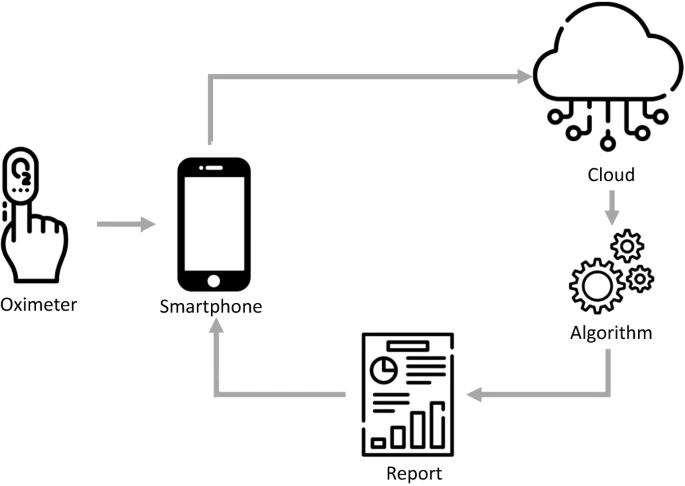
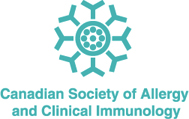
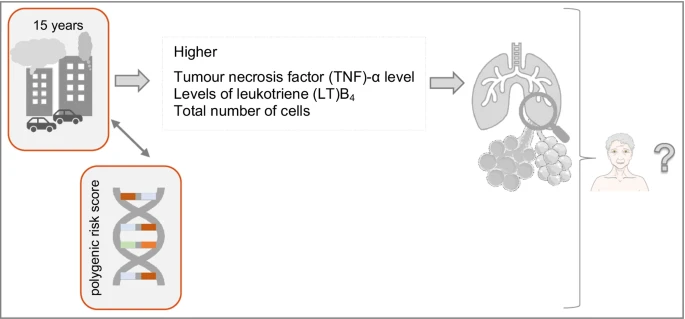

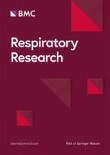




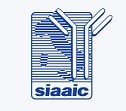


%2018.38.52.png)